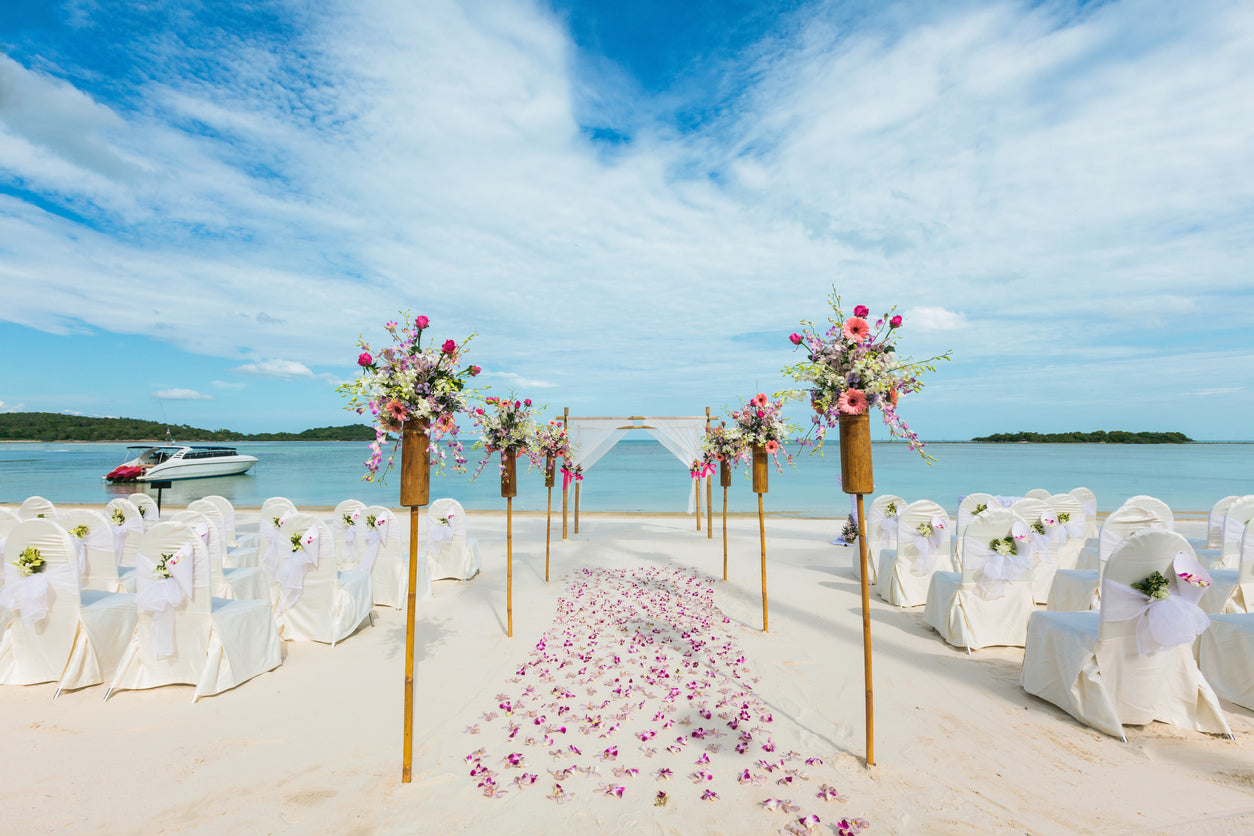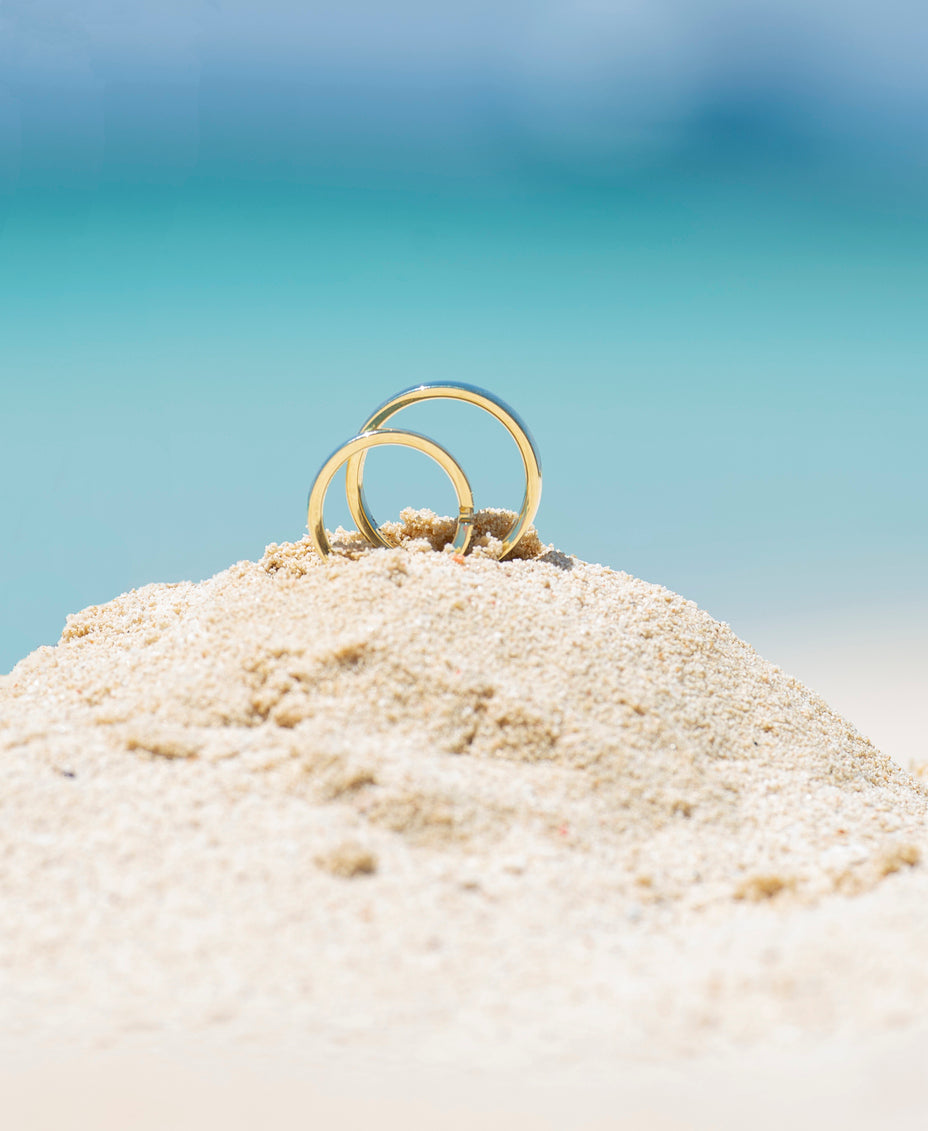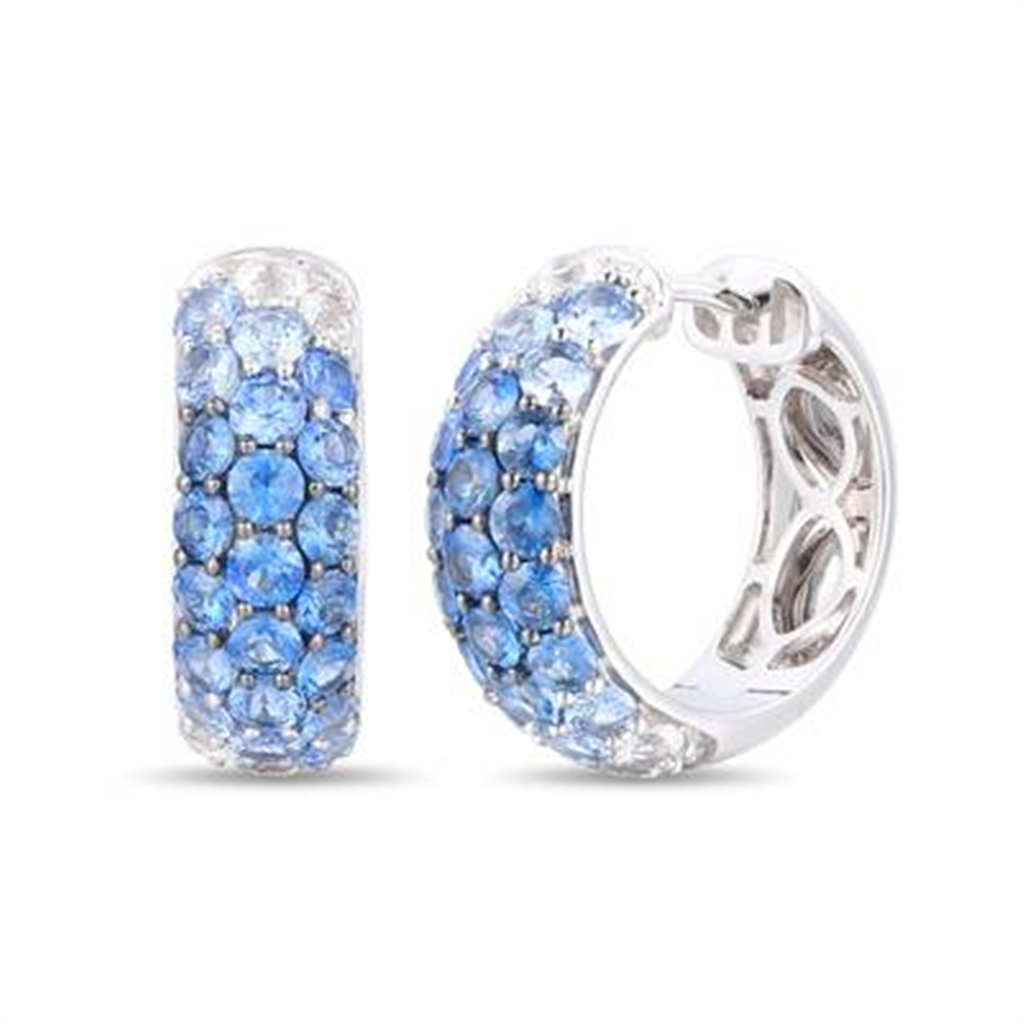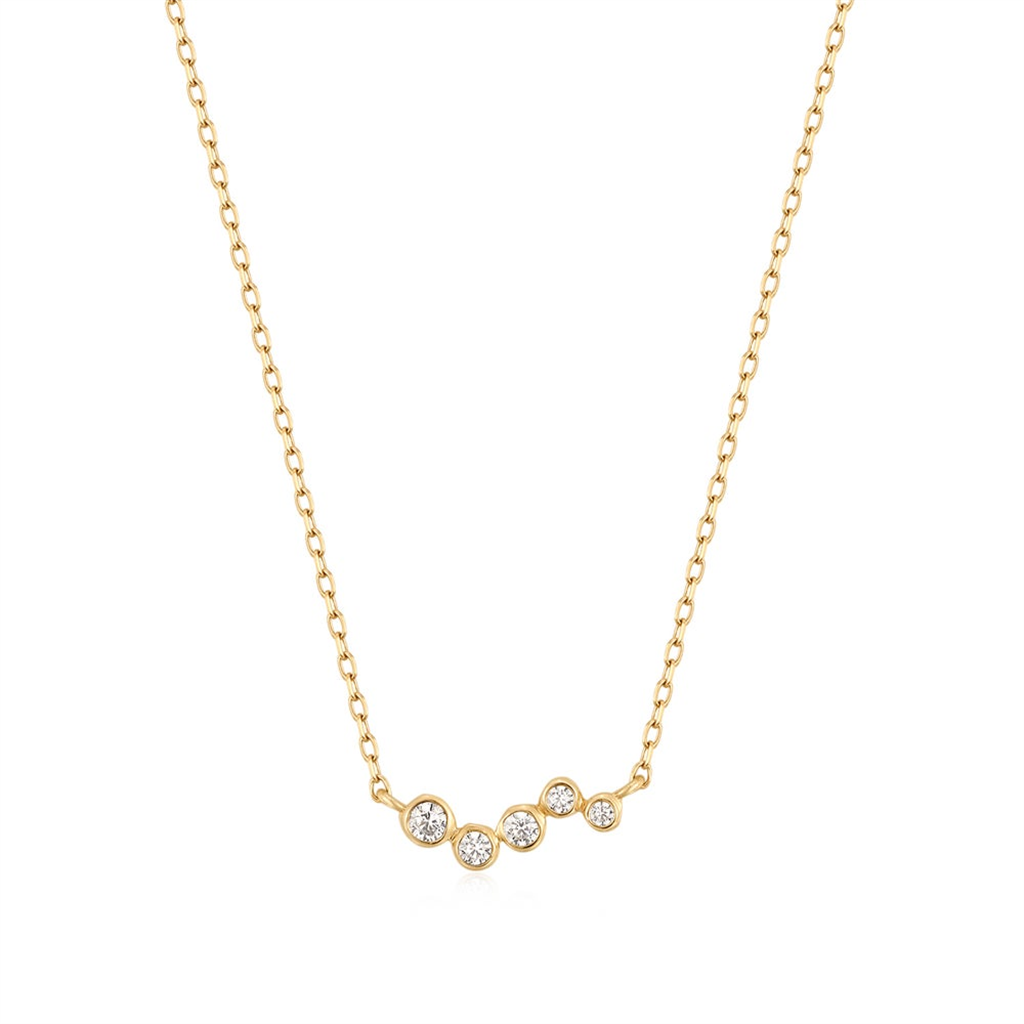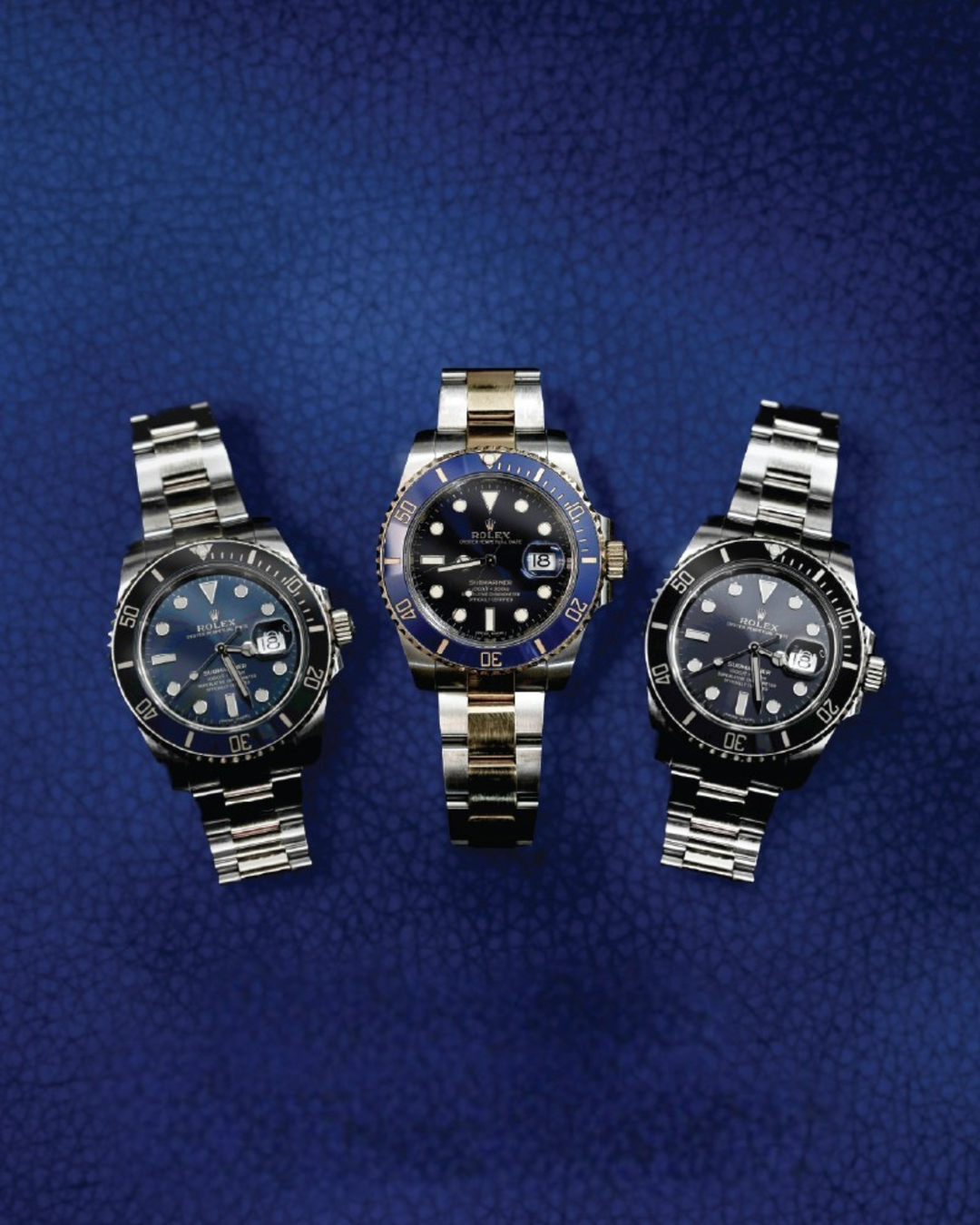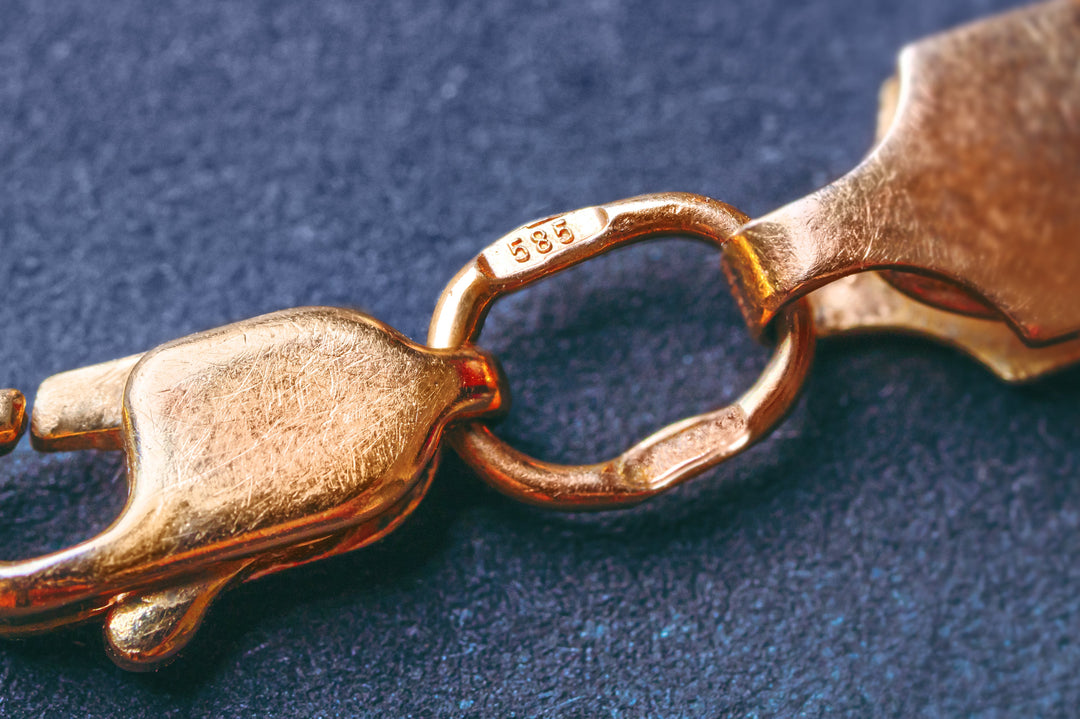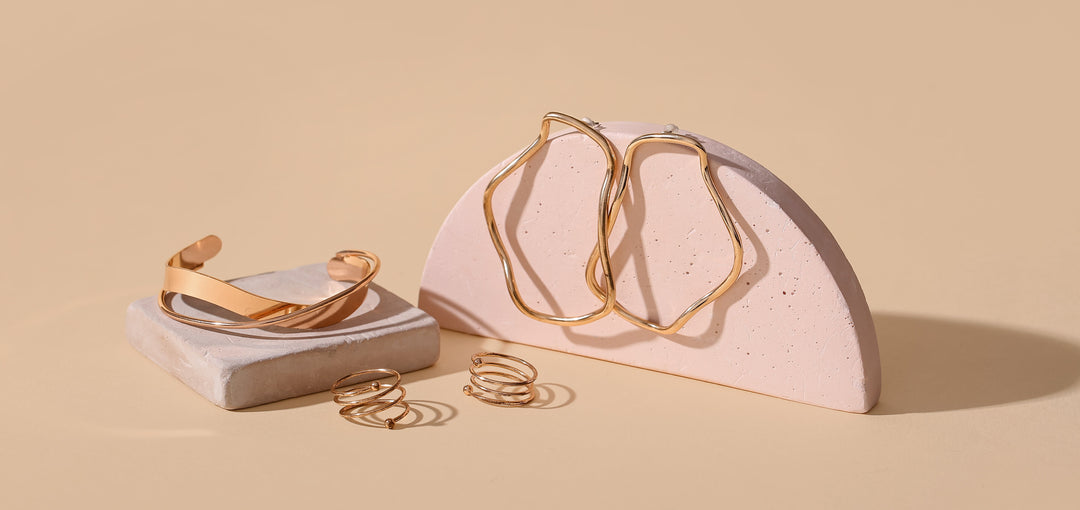A beach wedding is the perfect mix of beauty and unpredictability. Between the crashing waves, warm sun, and ocean breeze, there’s something magical about saying “I do” by the sea. But when it comes to choosing the right jewelry, it’s not just about looking good—it’s about picking pieces that work with your surroundings, your style, and the realities of beachside weather. So what is the best jewelry for a beach wedding? The answer depends on a few key factors.
From the materials that handle salty air to designs that complement the coastal setting, here’s how to choose jewelry that’s beautiful, practical, and ready for the sand and sea.
Choose Jewelry That Holds Up in Sun, Salt, and Wind
Salt air, intense sun, humidity, and blowing sand make beach weddings beautiful—but tough on jewelry. If you want your pieces to look great through the ceremony and beyond, it helps to know which materials can handle the elements—and which ones are better left for indoor occasions.
Metals that perform well at the beach:
- Platinum – Highly durable, tarnish-resistant, and non-reactive with saltwater.
- Solid gold (14k or higher) – Holds up well in salty, humid air and doesn’t corrode.
- Gold-filled or vermeil – More affordable and reasonably resilient, though prolonged exposure to moisture or sunscreen can wear down the finish over time.
- Sterling silver – May oxidize in salty air, but is safe to wear short-term and easy to clean afterward.
- Titanium and stainless steel – Strong, corrosion-resistant, and a good option for sensitive skin.

Metals to avoid in beach settings:
- Brass, copper, and bronze – Easily tarnish and react with salt or sweat.
- Base metals with thin plating – Can wear off quickly from sunscreen, sand, or heat.
What About Gemstones?
Sand might feel soft underfoot, but it’s made mostly of quartz, which ranks 7 on the Mohs hardness scale. That means any gemstone softer than 7 can be scratched simply by brushing against sandy skin, windblown grit, or textured fabrics. And once a stone is scratched, it’s hard to repair.

Gemstones Safe to Wear at the Beach
(Mohs 7 and greater than)
- Diamond (10) – Extremely hard and scratch-resistant. This includes mined and lab-grown diamonds.
- Sapphire and Ruby (9) – Durable and ideal for active wear.
- Spinel and Topaz (8) – Strong and vibrant options that can stand up to the elements. Also alexandrite.
- Quartz & Beryl Varieties (7) – Popular quartz varieties include amethyst, citrine, and rose quartz. Popular beryl varieties include emerald, morganite, and aquamarine. Also most varities of garnet. Tough enough to wear with caution.
Gemstone to Avoid at the Beach
(Mohs less than 7)
- Opal (5.5–6.5) – Soft and porous; sensitive to moisture, oils, and abrasion.
- Turquoise (5–6) – Can discolor from sunscreen, sweat, or oils.
- Pearls (2.5–4.5) – Especially vulnerable to scratching and erosion from sand or salt.
- Amber, coral, malachite, lapis lazuli, moonstone, fluorite – All softer stones that can be scratched or etched by sand.
- Cameos (typically carved from shell or coral) – Beautiful but fragile; easily damaged by heat, humidity, or abrasion, especially when worn on exposed areas.
If you’re wearing jewelry that includes softer gemstones or sentimental pieces, it’s worth protecting them—either by skipping them altogether or choosing settings that minimize exposure. Even tougher stones benefit from a quick rinse and gentle cleaning after the ceremony to remove sand, sunscreen, or salt.
Bonus Reading: The Ultimate Guide to Gemstone Jewelry Care
Match the Jewelry to the Wedding Style
The best jewelry for a beach wedding isn’t just about durability—it’s also about matching the mood. Beach weddings can be anything from barefoot and breezy to formal with ocean views. Knowing the overall style of the event helps guide what type of jewelry will feel intentional and well-suited.

Bohemian or Free-Spirited:
Flowy silhouettes, floral crowns, and barefoot ceremonies pair well with layered necklaces, mixed textures, and artisanal-looking pieces. Think hand-hammered earrings, delicate chains with symbolic charms, or earthy accents like shell shapes and raw stones. You can lean into asymmetry or natural forms for a look that feels effortless and a little wild—just like the beach itself.
Minimalist or Modern Coastal:
This style calls for simplicity with impact. Sleek bangles, geometric stud earrings, or a clean bar necklace can complement a slip dress or structured linen suit. Less is more here—one or two well-chosen pieces go further than a full stack. Matching metals across all your accessories can tie everything together in a subtle, elevated way.
Romantic or Ethereal:
Soft fabrics, dreamy lighting, and loose updos invite more delicate and feminine jewelry. Consider drop earrings with movement, a dainty back necklace for an open-back gown, or a fine bracelet that catches the light. Floral-inspired designs or tiny, glimmering stones add a hint of magic without overwhelming the overall look.
Glamorous or Formal by the Sea:
Yes, a beach wedding can be black-tie—with the right styling. If the dress code leans formal, jewelry can add drama in a controlled way. Statement earrings, bold cuffs, or an eye-catching cocktail ring can work beautifully—as long as the piece is secure and doesn’t compete with the natural beauty around you. Polished hair and structured silhouettes usually call for pieces with cleaner lines or high-contrast sparkle.
Casual or Intimate Elopements:
For simple ceremonies with just a few loved ones (or just the couple), the jewelry can be meaningful without being flashy. A sentimental pendant, heirloom ring, or pair of understated earrings can bring emotion to the moment without drawing too much attention. Comfort and personal significance are the priorities here.
Complement the Natural Setting
One of the most rewarding things about a beach wedding is how effortlessly beautiful the setting is. The sky, sea, and sand create a soft, light-filled backdrop that doesn’t need to be outshined—just echoed. Jewelry that harmonizes with the environment tends to photograph beautifully and feel more cohesive with the overall look of the day.

Look to the colors of the coastline for inspiration:
- Pale blue (aquamarine, light topaz) evokes the calm shallows or the sky before sunset.
- Soft white or cream (pearls, mother-of-pearl, moonstone) mirrors the surf and sun-bleached shells.
- Warm golds and champagne tones reflect the glow of the sand and afternoon light.
- Seafoam green or teal (amazonite, fluorite, even glass or enamel accents) can add a dreamy, ocean-inspired touch.
These tones tend to work across styles—from romantic to modern—and they offer a subtle connection to the setting without feeling theme-y or overdone.
Iridescent and oceanic textures add visual depth, especially in natural light. Mother-of-pearl, moonstone, and even opals seem to shimmer differently depending on the angle, making them popular choices for seaside ceremonies. Their layered glow can create a magical effect—especially in soft, golden-hour lighting.
But beauty doesn’t always mean beach-safe.
Many of the stones that best reflect the beach’s natural shimmer—like moonstone, opal, and mother-of-pearl—are also among the most delicate. All of these fall below 7 on the Mohs hardness scale, meaning they can be scratched by sand or dulled by salt, sweat, or sunscreen. If you're set on wearing them, consider earrings or pendants rather than rings or bracelets (which are more likely to rub against skin or fabric). And make sure to clean them gently after the event.
A few quick pairing ideas:
- A baroque pearl pendant with a silk slip dress
- Aquamarine stud earrings with a sleek low bun
- A brushed gold cuff next to a natural linen suit
- Pale blue topaz drops against a soft ivory gown
Choosing colors and textures that complement the surroundings makes your jewelry feel intentional—and gives your overall look a quiet kind of elegance that won’t compete with the waves behind you.
Prioritize Comfort for All-Day Wear
Even the most beautiful piece of jewelry won’t feel worth it if it’s uncomfortable halfway through the ceremony. Beach weddings often involve heat, humidity, wind, and hours of movement—so comfort should be a key part of your jewelry decision.
Start with weight.
Heavy earrings or chunky necklaces might look stunning in still photos but can quickly become distracting when you’re walking on sand, posing for pictures, or standing under the sun. Lighter designs—like huggie earrings, delicate chains, or thin cuffs—are easier to wear all day without pulling or shifting.

Consider how the piece interacts with skin.
In hot, sticky weather, tight-fitting jewelry can start to feel restrictive, and certain metals may irritate sensitive skin. If you’re prone to reactions or plan to wear sunscreen and makeup near your jewelry, opt for hypoallergenic materials and breathable fits. Open-back cuffs, adjustable chains, and threader earrings are all smart options that leave a little room to breathe.
Think about movement and fabric.
Jewelry that snags on lace, catches in hair, or shifts constantly in the wind will become a distraction. Smooth finishes, clean lines, and pieces that stay close to the body tend to be the most practical. If your outfit features textures like embroidery or fringe, avoid sharp prongs or long pendant chains that might tangle or pull.
And don’t forget the ceremony-to-reception transition.
Your jewelry should feel just as comfortable during your first dance or cake cutting as it did on the walk down the aisle. Pieces that don’t need adjusting—or that you forget you’re even wearing—are often the best choice. If you're planning an outfit change later, lightweight jewelry is easier to swap or layer without a mirror or much fuss.
Comfort may not be the first thing you think of when choosing your beach wedding jewelry, but it’s the secret to feeling confident, grounded, and fully present through every moment of the day.
Choose Designs That Stay Secure
Jewelry might be the finishing touch to your wedding look, but on the beach, it needs to be more than just beautiful—it needs to stay put. Between shifting sand, ocean breezes, and the occasional hug or hair adjustment, it’s surprisingly easy for a piece to come loose without you even noticing.

Opt for closures you can trust.
Earrings with lever backs, screw backs, or snug huggie closures are far more secure than open hooks or lightweight posts that can slip off. For necklaces and bracelets, lobster clasps, box clasps with safety latches, or even magnetic closures with built-in locks can offer more peace of mind than delicate spring rings.
Skip anything that might catch or swing too freely.
While dramatic drop earrings or layered lariats might work indoors, they’re more likely to twist in the wind or snag on flowing fabric at the beach. Styles that stay close to the body—like studs, climbers, ear cuffs, or collar-style necklaces—reduce both distraction and risk of loss.
Consider how active you’ll be.
If you're planning to walk barefoot in the sand, pose near the water, or dance into the night, think about how your jewelry will move with you. Rings, in particular, can become loose in the heat (especially if your hands swell or shrink), and bracelets with toggle closures may shift more than you expect. You might want to skip heirlooms or fragile vintage pieces for the day—or wear them for portraits and store them safely afterward.
Double-check sentimental pieces.
If you plan to wear something irreplaceable—like a family ring or a special necklace—have the settings professionally checked beforehand to make sure stones are secure and clasps are in good condition. And consider insuring the piece if you haven’t already.
Choosing secure, movement-friendly designs doesn’t mean sacrificing style—it just means making sure your jewelry is as ready for the day as you are.
Conclusion: Jewelry That Feels Right for the Moment
So, what is the best jewelry for a beach wedding? It’s the kind that balances beauty with practicality—pieces that work with the breeze, the heat, the movement, and the mood of the day. Whether your ceremony is barefoot and breezy or sleek and formal, your jewelry should reflect not only your personal style but also your surroundings.
By focusing on the weather, the wedding aesthetic, the natural palette of the setting, your own comfort, and the security of each piece, you can choose jewelry that feels effortless from the first photo to the final dance. And perhaps most importantly, you’ll be free to focus on what really matters: the moment, the setting, and the people you’re sharing it with.
*This article is intended for general informational purposes only and does not replace personalized advice from a jeweler or gemologist. Materials and gemstones can vary in durability, and individual pieces may require specific care. For the safest and most appropriate jewelry choices for a beach wedding, we recommend consulting a professional who can assess your jewelry’s design, materials, and condition.

Have questions?
We're Here to Help
Need help finding the perfect jewelry for a beach wedding or other occasion? Contact us for assistance or to make an appointment.


